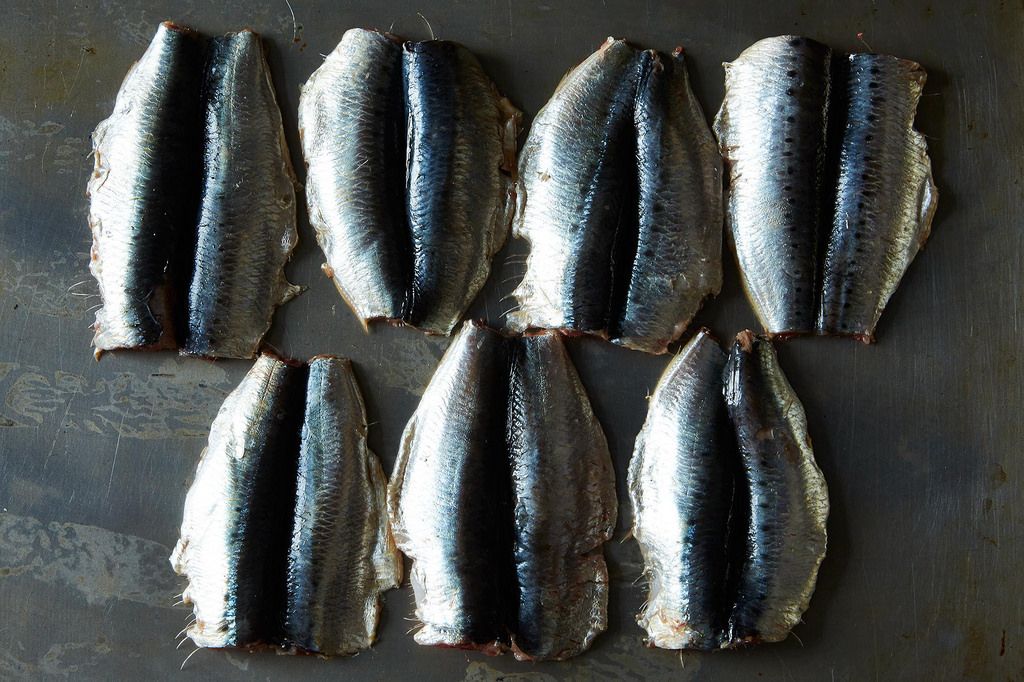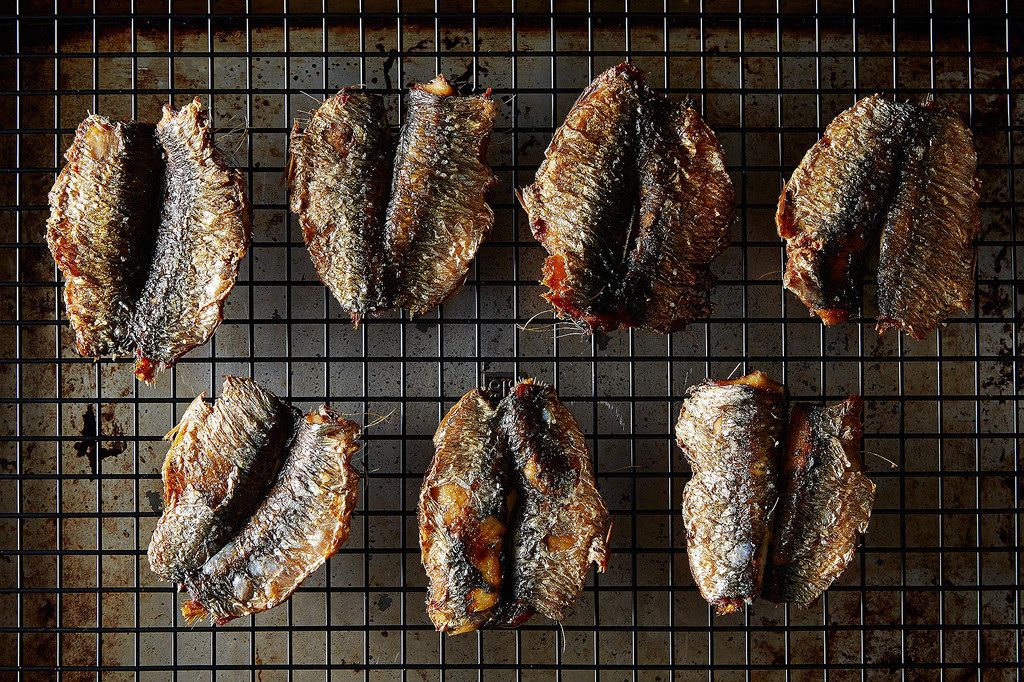This summer, Christine Burns Rudalevige of The Family Fish Project is on a mission to help us cook and eat more seafood at home.
Today: Big taste comes in a small package. Learn how to prep sardines and then dress them up for dinner.

Fresh, small fish like wild Atlantic herring, Pacific sardines, and imported Mediterranean sardines are a treat well worth the effort of sourcing and dressing for dinner.
Don’t let the name sardines fool you. Wild Atlantic herring is one of 20 species around the world called “sardines” by their respective locals. Higher-end fishmongers will bring in the sardines caught off the coast of Spain and Morocco. But, on the East Coast, because it is one of the most common fish swimming in the Gulf of Maine, herring is widely considered to be a very sustainable source of protein. It’s also going to be the cheaper choice. Fresh herring costs about a third of the price of its European cousins. There are Pacific sardines available on the West Coast, but recent studies have shown evidence of a collapse in numbers and regulators cut allowable catch rates for 2014 by a third.
More: Got leftover fish? Don't give up: Here's the best way to repurpose it.

Once sourced, you can certainly be a stud and gut and scale sardines yourself. But I get the fishmonger to do it because a) I am not a stud; b) I don’t like the smell of guts in my kitchen garbage; and c) sardines have a delicate skin that gets damaged easily.
I do debone and butterfly fillet these smaller fish before cooking. Some say this is wasted time because removing the bones is easier once the fish is cooked. But I take this step because I think they cook faster and more evenly, and my family whines too much if they have to work for their food tableside.
To butterfly a sardine, use a sharp knife to cut off the head, fin, and gills. (You can leave the tail on.)
Extend the cut used to gut the fish so that the fish is open from the top to the tail end. Lightly press the fish onto a cutting board, so the empty cavity is against the board and the two fillets are splaying out on either side, skin-side up. Gently but firmly, press down on the backbone to open up the belly area. You will feel the spine coming away from the flesh as you push down.
Turn the fish over and carefully pull out the backbone. Be careful not to pull the flesh off at the same time. Run your fingers over the flesh to check for pin bones and remove any you find with kitchen tweezers. Trim away any edges so the fish looks nice and neat.

Now, the fish is ready to cook, which is a simple matter of searing it in a hot, oiled skillet (like in the recipe below) or on a prepared grill for 2 to 4 minutes.
Once cooked, these oily fish cry out for a shot of acid -- like lemon, parsley, and garlic; pickled vegetables; or a vinegary tomato soup (like the recipe below). Oh, and don’t forget an interesting piece of bread to help sop up what’s left in the bowl.

Seared Fresh Sardines and Tomato Soup
Serves 4
2 pounds ripe tomatoes
1 teaspoon sugar
1/2 cup plus 2 tablespoons olive oil, divided
Kosher salt
Freshly ground black pepper
Small bunch of basil, leaves separated from stalks
Small bunch of chives
1 sweet onion, peeled and chopped
1 fennel bulb, trimmed and chopped
1 carrot, scrubbed and diced
2 garlic cloves, minced
4 cups chicken or vegetable stock
2 tablespoons balsamic vinegar
4 small fresh Atlantic herring or Mediterranean sardines, gutted, heads and fins removed, and butterflied
2 tablespoons crème fraîche for serving
2 teaspoons salt-cured capers for garnish
See the full recipe (and save and print it) here.
Photos by James Ransom




See what other Food52 readers are saying.